Comments from the Chair
Alamo Group Executive Committee
The local Alamo Group of the Sierra Club is led by volunteer members of an Executive Committee. The ExCom normally meets once a month at Eco Centro, currently the second Thursday evening 6pm.
Members of ExCom must be Sierra Club members and are elected by general membership in late fall. Three members are elected each year for a three year term, beginning in January.
We are actively seeking new volunteers to serve starting in January, 2018. Please email me with your expression of interest and a brief bio. A Nominating Committee will begin work shortly. Thank you.
Politics and our Environment
- Locally the City of San Antonio (COSA) will focus on its FY2018 Budget in August and September. We hope this budget includes more support for air quality efforts, for development of a concrete Climate Action Plan, for a much better Water Management Plan from SAWS which includes rainwater harvesting, for better stormwater management, for low impact development policies, for better transit options, for creative ways to address gentrification and reduce social and economic segregation, for Vision Zero safe streets, for better Edwards Aquifer protection, for better endangered species protection, for more green space, for more recycling and a ban on single use plastic bags.
- Texas Legislature will remain in Special Session until mid-August. The most specific anti-environmental legislation under consideration is anti-tree ordinance HB 70,which currently is left pending in committee. However, Gov. Abbott and Lt. Gov. Patrick are pushing hard to get the bills through and now have over 40 authors signed onto the legislation. Anti-tree companion SB 14 has already passed the Senate. Please answer the alert below and take action!
Social legislation meanwhile is moving forward... - Gov Abbott vetoed funding for our local air quality program via AACOG. Our own Russell Seal was a key player in efforts to obtain CPS support for reactivating local air quality monitors, which were rashly shut down by AACOG administration without any advisory input. Longer term efforts to find permanent funding for AACOG’s photochemical modeling program continue, as well as efforts to revive the now shut down mechanisms for stakeholder involvement in the air quality program.
- U.S. EPA efforts to stop new methane gas emission rules currently have been reversed in court. Efforts to delay new ozone standards may face similar court challenge from Sierra Club and other groups. Efforts are also under way to expand oil and gas development on federal lands and offshore, as well as expand LNG (Liquid Natural Gas) export facilities along the Texas coast. The proposed “Big Beautiful Border Wall” is facing not only environmental resistance in the Lower Rio Grande Valley (it would cut through and isolate large areas of National Wildlife Refuges) but also from ranch owners facing condemnation and loss of land and water access for their cattle.
- Congress is attempting to pass bail out legislation (H.R. 3053, the Nuclear Waste Policy Amendments Act of 2017) to again prop up the nuclear power industry. Georgia and South Carolina utilities are midway through construction of nuclear plants, plants which are many years behind schedule and many billions of dollars over budget. If passed this national legislation will bail out the utilities and their investors at the expense of rate and tax payers. As you know, without strong local Sierra Club and allied action, we might be in a similar situation if CPS and COSA had continued forward with plans for South Texas (Nuclear) Plants (STP) 3 and 4.
- House Representative Lamar Smith (TX-21) has accused the Sierra Club and other environmental organizations of receiving funding from Russia, asking the Treasury Department to investigate. Mr. Smith has been in Washington too long. This is his kind of BS of course.
Lone Star Chapter Report
- I also serve as at-large rep to our Lone Star Chapter. LSC quarterly ExCom meeting was held in Austin July 22-23. I am happy to report the Chapter remains fiscally sound for the moment. You may not realize it takes a lot of money to maintain a viable office in Austin, with paid staff, researchers, organizers and lobbyists. Contributions are ALWAYS needed and you can donate here. I also report with sadness that the Chapter’s long time Administrative Assistant, Jerome Collins, has announced his retirement. Many of us have benefited over the years from Jerome’s always polite, friendly and effective assistance. We wish him all the best in his well deserved retirement.
- The Chapter has seen increased membership and support since the fall elections. As a result more staff have been hired to help with critical issues here and around Texas. Kristal Ibarra is the new State Volunteer Coordinator, and Greg Harman is clean energy organizer helping us right here in SA.
- LSC Awards dinner was held in Austin Saturday evening 7/22. This was my first exposure to this event and it was quite inspiring. Awards were presented to Conservation Activists, Journalists and others who have had a substantial and sustained impact in improving the environment here in Texas. Their stories were often quite moving, from efforts to stop the Trans Pecos Pipeline, to bring potable water services to an impoverished rural Dallas minority community, to outstanding journalism, etc. I know we have similar stories and deserving individuals here, and I hope next year they can be recognized at this event too.
- The LSC had a special Equity Workshop event for half of Saturday and all of Sunday. Staff as well as ExCom volunteers were in attendance, with three professionals leading these sessions.
The binding topic in the discussion was racism and how it effects virtually all aspects of our society, including Sierra Club. There was some disagreement in ExCom about the need for and potential benefit from such training, and I believe a few people chose not to attend for those reasons. I have had discussions in person and on line with SC members about the SC push for greater “diversity, equity and inclusion”. Some feel this is a distraction from our core environmental mission and a regrettable diversion of resources that are so much needed in so many other areas.
I must disagree with that position. I agree with National that for SC to survive and remain effective as an environmental advocacy group we must reach out and broaden our membership. We must bring in more young people, more people of color and more people of diverse economic and social backgrounds. Old white middle class men like me (and women) cannot remain the predominate SC demographic. Others must feel not only welcome but vital, and their ideas and methods, un-“traditional” as they may sometimes be, must be welcomed gratefully and carefully reviewed in an open and friendly consensus building process.
SC has spoken for some time about “environmental justice” and I think of the training we received last weekend as a part of that. As with persistent sexism, every organization including SC can benefit from a careful review of its internal and external operations through the lens of racism. I call attention to the July National SIERRA Magazine. I heard some complaints about Michael Brune's editorial; however, in the same issue are stories about a woman environmental activist in Honduras assassinated for her efforts to protect poor people from a hydroelectric dam project promoted by the country’s rich and powerful.
There was also an article about an isolated Alaskan native community at imminent risk of submersion due to climate change and sea level rise, but lacking funds to move. We see so clearly in just this one issue of SIERRA how closely “traditional” environmental issues tie in with social justice issues as to be inseparable. The same forces destroying our earth are destroying so many minority and poor communities throughout our country and around the world.
SC has evolved greatly since John Muir’s time, but as he said then, everything is connected. I believe SC must continue to evolve as our whole global commons has entered into crisis. We can no longer focus only on “traditional” land and species preservation, air and water quality etc. I look forward to expanding our efforts at LSC and Alamo Group to reach out to other communities we need, to learn from them, to share in their struggles, as we all work together to save our planet.
by Terry Burns, M.D., Alamo Group Chair
Justice-focused Environmental Movement in Texas
Kristal Ibarra-Rodriguez and Greg Harman will be our guests at the August General Meeting. Kristal Ibarra-Rodríguez is the Chapter's new Volunteer Coordinator based in Austin and Greg Harman is the new Clean Energy Organizer based in San Antonio.
Tuesday, August 15th
6:30 p.m.
William R. Sinkin Eco Centro, 1802 North Main Avenue
Map
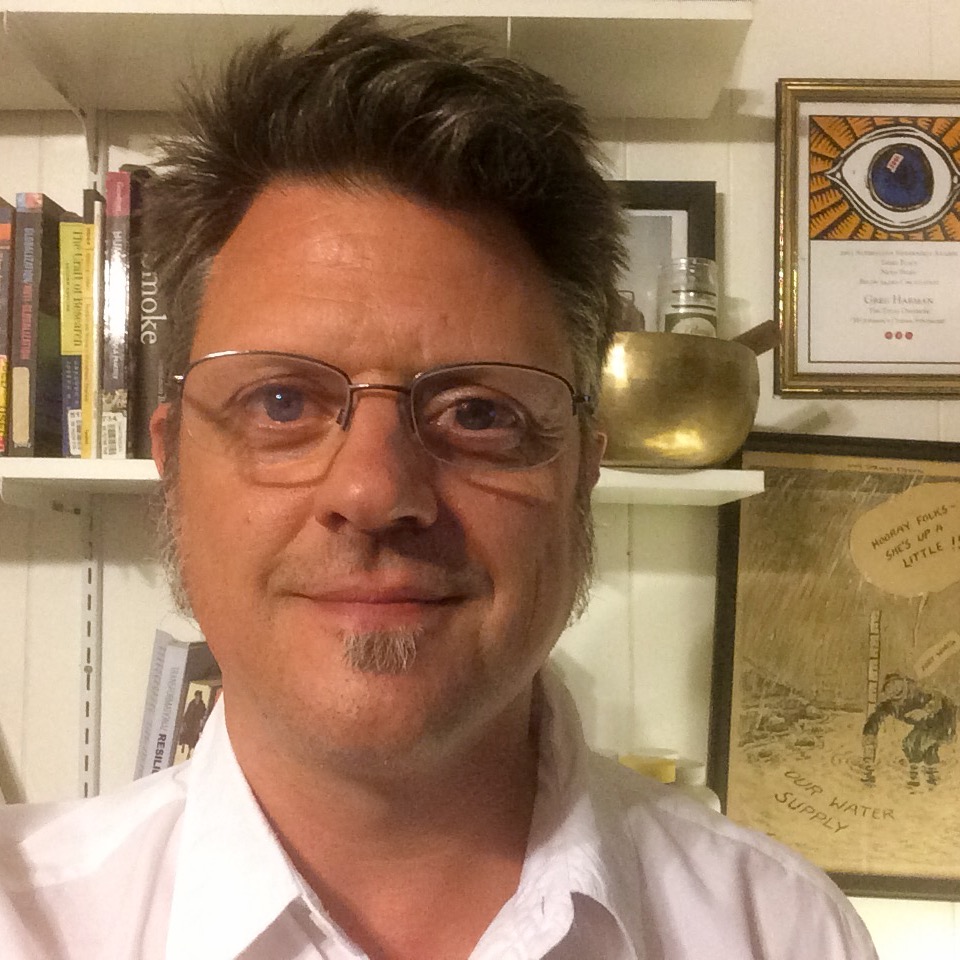
Prior to joining the Sierra Club, Greg Harman worked for more than 15 years as a reporter and editor, writing extensively on environmental health and justice struggles in Texas and beyond. His work has appeared in the Austin Chronicle, Guardian Sustainable Business, Indian Country Today, Yes! Magazine, and Texas Observer, among many others, He has been honored by a range of media and environmental organizations. He was selected by the Sierra Club’s Lone Star Chapter for its annual environmental reporting award in 1999 and 2009. His knowledge of San Antonio's many environmental challenges and opportunities is informed by his time as a staff writer and editor at the San Antonio Current, where he worked from 2007 to 2012. He is a former contributing editor for Texas Climate News and current a Master’s candidate in International Relations (emphasis on conflict transformation) at St. Mary’s University.

After serving as a long-time volunteer with the Sierra Club at both local and national levels, Kristal Ibarra-Rodriguez now works with Lone Star Chapter volunteer leaders and staff to develop and implement outreach programs that support the work of existing volunteers and aim to recruit new ones. Prior to this role, she conducted outreach on waste management practices in California with successful efforts toward achieving the ambitious goal of 75% waste diversion from landfills by 2020. Kristal is a graduate of the University of Puerto Rico, her home island, where she studied General Science with particular focus on Environmental Education and Sociology.
Protect Texas Trees from Greedy Developers and Short-Sighted Legislators
July 28, 2017
Greg Abbott and his allies are yet again going after the ability of municipalities to govern themselves, this time by trying to take away our ability to protect trees from irresponsible developers.
Right now, the Texas Legislature is considering two bills to stop cities from protecting trees, and one has already passed the Senate. Over 90 municipalities in Texas have adopted ordinances to preserve trees because trees help cool our cities, improve air and water quality, reduce erosion and flooding, enhance property values, and improve our quality of life. Still, developer-friendly politicians in the Legislature want to allow developers to clear-cut vast areas of forest.
Take 2 minutes to email your state representative expressing your opposition to HB 70, the House's tree clear-cutting bill. Let them know that you want them to defend our environment and local control!
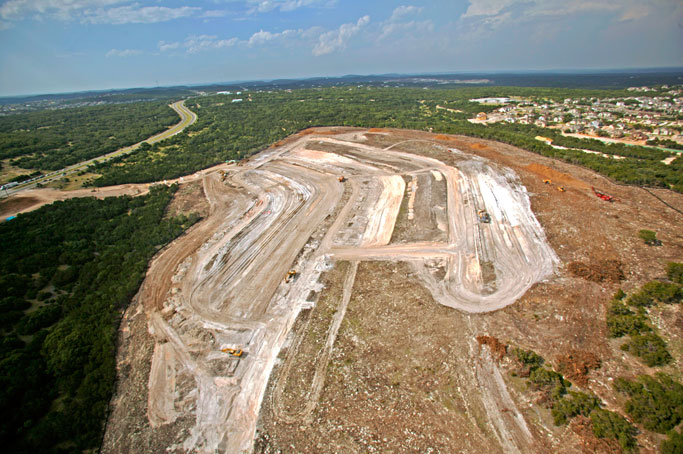
HB 70 allows clear-cutting by prohibiting city rules to restrict tree removal
Tree ordinances are an inexpensive, efficient, common sense solution to many problems municipalities face, such as the heat island effect, degrading air and water quality, erosion from stormwater run-off, and the need for contact with the natural world in a time of urban growth. Without them, taxpayers are forced to pay for remediating the flooding, air pollution and water contamination new developments discharge onto other people’s property.
It takes decades for trees to mature, yet moments for them to be cut down. As we face increased environmental challenges from urban growth and climate change, it’s vitally important that we protect our trees. Contact your representative to tell them you value our trees and want cities to be able to protect them!
by Richard Alles, Forests/Trees contact
Adventures in the Galapagos
This month, our Lions Field event is a presentation about Karen and Russell Seal's trip to the Galapagos Islands.
Thursday, August 24th
6:30 p.m.
Lions Field Adult Center, 2809 Broadway @ Mulberry
Use VIA bus route 9 or 10
Map
Karen & Russell are long-time members and activists. Karen also serves as the Alamo Group's Facebook page administrator while Russell is currently serving as our conservation leader on fracking. This event is free and open to the public.
Big Bend National Park
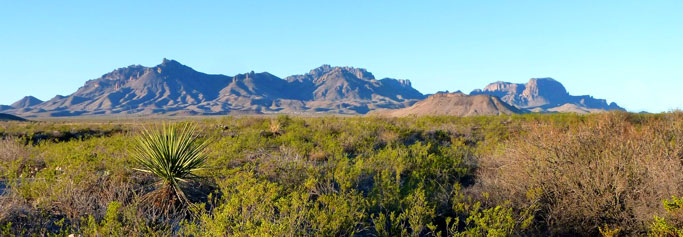
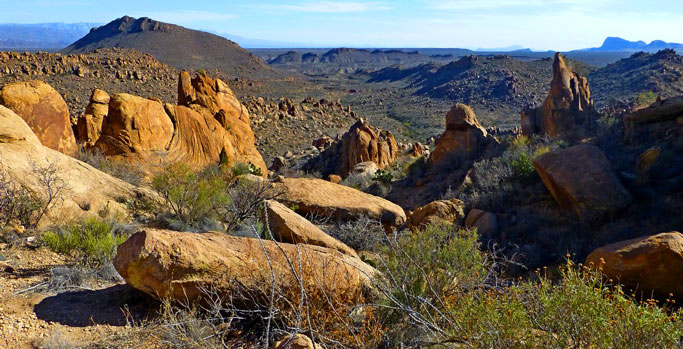
Rapid Transit Corridors: Take the Online Survey
VIA Metropolitan Transit has been studying which corridors in the city would be feasible for placing either Bus Rapid Transit, or Light Rail Transit--each one in its dedicated lane. Note that the VIA Primo runs in traffic, not in a dedicated lane. In VIA Vision 2040, VIA has been researching the level of traffic congestion along a corridor, what the ridership potential was along a corridor, how many jobs were located along a corridor, or were anticipated, and popular destinations. Coordination with the San Antonio Tomorrow Plan and other regional planning efforts also guided the selection of the initial corridors to be considered. For instance, several regional activity areas are located along busy corridors, such as downtown, the medical center, and Brooks. These areas may have additional housing, or retail, or jobs added.
Four out of several corridors were selected as the most feasible to look at first in terms of feedback. These include corridors located East-West, North Central, Southeast, and Northwest San Antonio. These can be viewed here in detail. Study the corridors and provide VIA feedback on survey.
Please respond quickly, as deadline is August 5. Again, VIA is looking for input or feedback on locally preferred route options and transit modes. Which one of the corridor do you prefer, and which mode do you prefer--either BRT or LRT?
This is just the start of evaluating which route or routes and modes might become a reality in future. Probably only one corridor would be selected first and be built in phases over time and after a public vote. Further considerations involve how stations would look, where rapid transit would be placed on the corridor. Other considerations include location of possible bike lanes, complete streets, increased walking opportunities. All the research, feedback, attention to detail, and decisions will help create a more livable city for residents in the future. Think about links to linear parkways. Think about bike storage at stations. Tree shaded sidewalks in future. More balance between modes. Easier access to jobs.
Imagine a city where transportation options were easily accessed, where connectivity was possible quickly between options, where time intervals between stops are quick and reliable, where one could read on a smooth ride. Please study this map of four alternative corridors, then fill out the survey online.
by Barbara McMillin, Alamo Group Transportation Leader
Op-ed: Protect tree ordinance, city from Abbott
Editor's note: this op-ed appeared in the July 17th issue of the San Antonio Express-News
Despite the legislative session being one of the most contentious in recent memory, homebuilders and cities managed to agree on a bill limiting local tree ordinances. But Gov. Greg Abbott vetoed the bill and called for statewide repeal of tree ordinances in the special session that began July 18th.
Based on past incidents, one can easily predict the consequences of Abbott’s legislation; homebuilders from California will come into our community and clear-cut entire hillsides of trees. To make way for big-box parking lots, giant heritage oaks will be routinely destroyed.
And taxpayers will be saddled with the costs of dealing with the stormwater runoff, air pollution and water contamination these new developments generate.
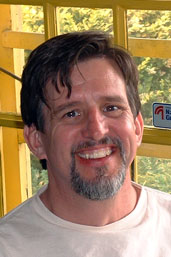
Based on the rhetoric coming out of Austin, you might not realize that you are probably free to do as you please with your trees. That’s because San Antonio’s ordinance, like about 98 percent of ordinances in Texas, applies only to land developers and builders, not to homeowners. Moreover, ranches and agricultural land are exempt and counties aren’t allowed to have tree ordinances.
The military has been quite vocal regarding the tree ordinance’s importance to Camp Bullis’ mission. Joint Base San Antonio-Fort Sam Houston and JBSA-Lackland and JBSA-Randolph rely on Bullis for field training. With more than 85,000 personnel stationed at these military installations and the secretary of defense calling for Base Realignment And Closure, or BRAC, in 2019, Abbott’s legislation could have a devastating impact on our local economy.
Tree ordinances are an equitable requirement imposed on new development to offset its impacts. When new subdivisions and strip malls are finished, they discharge storm water, contaminants and pollutants onto other people’s property. As trees are bulldozed and natural land covered with streets, driveways and buildings, flooding and drainage problems increase for downstream property owners.
In a story titled “With a building boom comes higher flood risk,” the Express-News reported that “floods keep happening, damaging private property and roads, and taxpayers end up with the bill. Since 2007, San Antonio and Bexar County combined have spent at least $850 million on drainage. That’s only a small fraction of the $2 billion worth of flood control projects needed in the city alone.”
Subdivisions are home to thousands of cars emitting tons of toxic gases and even carcinogens such as benzene. Hot, unshaded parking lots are areas of prolific ozone generation.
Moreover, pesticides, herbicides, dog droppings, motor oil and other contaminants are washed off with storm water and find their way into creeks, rivers and the Edwards Aquifer.
San Antonio enforces its tree ordinance to ensure that trees remain to reduce stormwater runoff, clean up air pollution and absorb the water contamination that new developments generate. In a crowded city of 1.7 million, people must clean up after themselves. That’s why developers are required to install expensive sanitary sewer systems and why they are required to preserve trees.
San Antonio’s trees remove about $84.4 million worth of air pollution each year. They provide about $1.6 billion in storm-water management value. And their root systems absorb contaminants, preventing them from polluting our drinking water supply, the Edwards Aquifer.
Finally, city taxpayers are spending $3.4 billion on the Vista Ridge pipeline, which will bring water to support future development. And we’ve spent $325 million buying forested land over the aquifer recharge zone to protect our drinking water from development. We have been more than fair to the land development industry.
So don’t let the governor overturn our tree ordinance and mess with our economy, health and safety.
Call your state senator and representative and tell them to stand up for San Antonio and its trees.
Richard Alles is the forests/trees conservation leader of the Alamo Group of the Sierra Club

Outings: The Call of the Wild
Visit the Alamo Sierra Club Outings page on Meetup for detailed information about all of our upcoming Sierra Club Outings.
The Alamo Sierran Newsletter
Richard Alles, Editor
Published by The Alamo Group of the Sierra Club, P.O. Box 6443, San Antonio, TX 78209, AlamoSierraClub.org.
The Alamo Group is one of 13 regional groups within the Lone Star Chapter of the Sierra Club.
Keep your email address current!
Send updates to Loyd Cortez, providing your name, address and membership number (if known).
Changed your mailing address?
Have you moved? Let us know by sending your old address, your new address and your member number (look on the upper left corner of your mailing label) to: address.changes@sierraclub.org.
Go online for the latest news and events
 |